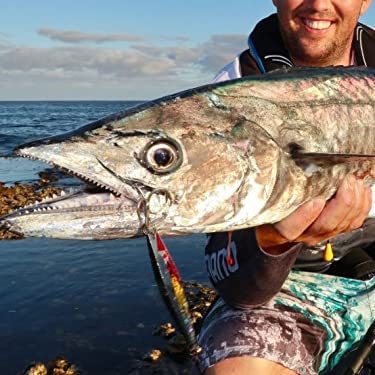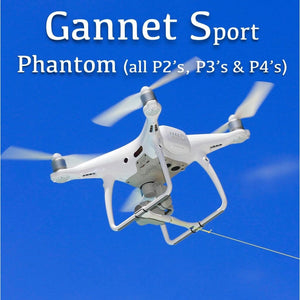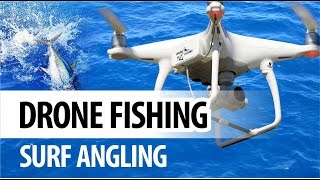
New Zealand has an exciting new method of fishing, drone fishing. This exciting new technique uses the latest in drone technology. It opens up a new world of fishing options. Drone Fishing NZ and DJI are the best places to buy a drone for fishing. Splash drones, GoFish cams, and custom-built fishing gears are all available.
Aerokontiki Drones
Sharkan makes the Fishhawk fishing drone, which captures a clearer picture of what you're doing. This drone's camera is stabilized and shoots 12-megapixel photos and 4k UHD videos at 30 frames per second. The videos can be viewed on your smartphone. The drone offers a range of good transmission and flight time, as well as a spare batteries that can be charged.
Mobula
The Mobula drone is specifically designed for fishing, so you don't have to worry about letting it fly into the water. The drone can survive in wind up to 20 kph and is buoyant. It also includes safety features such an automatic return home, automatic release of payload, and three release methods. In addition, you'll never have to worry about losing your drone because it will return to the water automatically if its battery runs out.
Banks'
A fishing drone is a popular choice for anglers and other sports enthusiasts. But, drones can have their own problems. First, drones are not safe for fishing in too deep water. The second problem is when the drone crashes again in the same spot. If this happens, the video information is not always reliable.

SplashDrone 4
Swellpro has designed the SplashDrone 4 with a brand new float platform for water sports and recreational purposes. The drone can be used for fishing parties or other water-related activities. It is made from corrosion-resistant materials, as well as industrial-grade ABS to withstand the most severe conditions. The SplashDrone 4's patented Smooth+ flight control system gives the user complete control over the drone, which helps keep it stable in any situation. Its advanced technology enables it to capture every angle of the sky.
Drone for fishermen
If you're a New Zealand Fisherman Drone fisherman, then you're in for a real treat. Drone fishing enthusiasts prize snappers as a highly sought-after species. Snapper are also beautiful and delicious to catch. These fish are often found near the North and South island coasts. They often congregate during the springtime when they spawn. These fish are available in summer as well as fall, so you can catch them all year.
Flying a Drone
To ensure your drone fishing trip in New Zealand is a success, you need to follow these guidelines. First, be aware of the law. It is against the law to fly your drone over marine life, or within 500 metres of any marine mammal. Also, be aware of where you're flying your drone. You don't want it to get stolen or damaged.
Payload for a drone
The payload of a drone that you use for fishing is something you should be aware. A drone must have enough payload to carry heavy fish and be able to fly for extended periods of time. If you're only going to use your drone for a few minutes, you'll probably catch too few fish to make the experience worthwhile. The technology behind drone fishing in New Zealand has improved.

FAQ
Is it a crime to fly drones?
Yes, flying drones can be illegal in certain countries. These include Australia, Canada. Germany, Japan. New Zealand. Singapore. South Korea. The United Kingdom. However, it is legal in other countries like France, Italy, Netherlands, Poland, Russia, Switzerland, Turkey, Ukraine, and Vietnam.
How high can you fly a drone without a license?
The FAA has no limit on how high you can fly a drone. However, they do require you to register your unmanned aircraft system (UAS), which includes the registration number, model name, weight, size, serial number, manufacturer's name, date manufactured, and other information.
Is Drone Use Banned in Your Country?
The FAA bans drones flying in restricted areas such as airports, stadiums or sporting events, nuclear power stations, hospitals, prisons, and other sensitive areas. However, they do allow them to fly at night using GPS technology.
Statistics
- According to industry research from ZipRecruiter , there are 10 cities where the typical salary for a Drone Pilot job is above the national average. (dronesgator.com)
- With the top 10% making over $100/h and the bottom 10% making as low as $10/h. (dronesgator.com)
- Research and Markets predict a growth rate of 51.1% over the next five years. (thedroneu.com)
External Links
How To
How to Fly Drones at a Beginning Level
A drone is an unmanned aerial vehicle that can be remotely controlled and used for surveillance, aerial photography, film production, research, and other hobby purposes. Drones are a technology that has been around since World War II. DJI's Phantom series quadcopters were first commercially available in 2010. There have been many types of drones since then, including beginner-friendly drones like the Parrot AR Drone 2.0 and professional-grade multi-rotor crafts like the DJI Mavic Pro.
There are many options for flying a drone.
-
Remote control – This technique uses a control device attached directly to your hands that allows you steer the drone around its flight path. There are two main types: Joysticks (like a radio), and On/Off switches (like an alarm clock).
-
Manual Control - Using a smartphone app, this method allows users to remotely operate the drone via GPS coordinates. You must keep track of the location where you want the drone to go and follow the instructions from the app.
-
Autonomous Flight: This means that the drone will take care of all the piloting. It is basically flying autonomously and without human intervention. It must have a builtin camera, sensors capable of taking images and data to enable autonomous flight.
-
Triggered flight - This is similar to manual control except that the pilot sets up a preprogrammed route and the drone follows the route until it reaches its destination. After the program is complete, the drone automatically returns to the ground.
-
Landing Gear: Some drones have landing gear that allows them safely to land in case they lose power or run low on battery.
-
Goggles-Some pilots use goggles to protect their eyes from debris during operations.
-
Camera - You can capture photos and videos with your drone from the air.
-
Obstacles: Some drones are equipped with obstacle avoidance systems to prevent them from hitting obstacles.
-
Speed – Some drones can reach speeds in excess of 40 mph.
-
Battery Life - Most drones can last between 20 minutes to 3 hours, depending on how much power you're using.
-
Range - Some drones can travel upto 30 miles depending on their models.
-
Power source - Not all drones can use an external power source. Others can run on internal batteries.
-
Weight - Some drones are lighter than others, while some models can weigh as much as 4 pounds.
-
Size - Drones come in many sizes, from small gadgets that fit in one's hands to large craft that weigh more than 50 lbs.
-
Price – All drones fall into a price category. These range from expensive models that cost thousands to affordable options that start at 100 dollars.